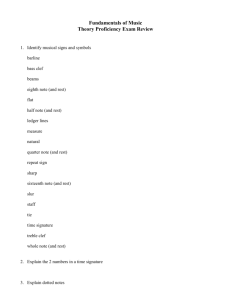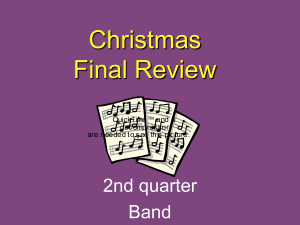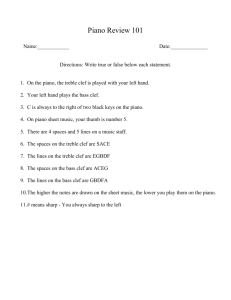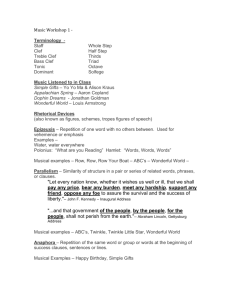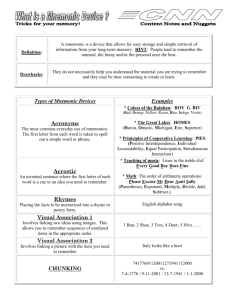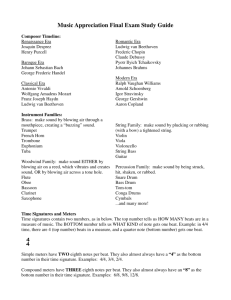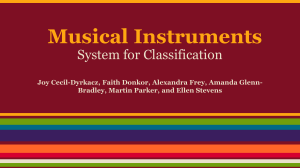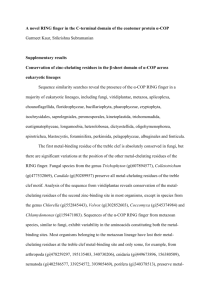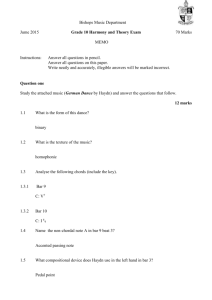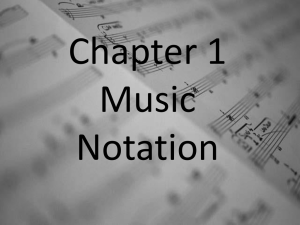File
advertisement
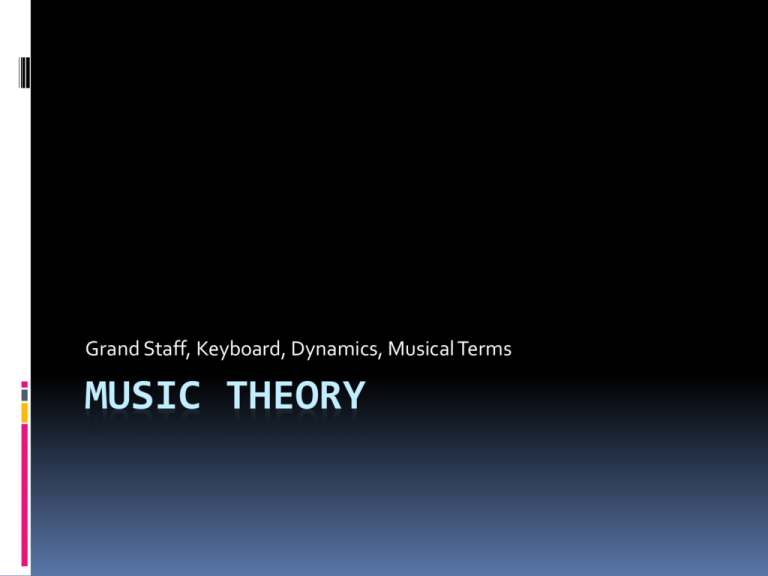
Grand Staff, Keyboard, Dynamics, Musical Terms MUSIC THEORY Music Theory It is important to understand the use of music theory and its ability to aid you in the performance of music! Understanding and interpreting musical notation is important to musicians. When you understand how music functions you’ll be able to learn and understand your material at a much faster pace. It is important to recognize the connection between the lines and spaces on a grand staff and how that relates to a musical keyboard. Not only will this aid you in your understanding of music theory, it will also help you properly utilize your voice as well. Grand Staff The grand staff is usually comprised of two clefs. The Bass clef, which is the bottom clef, and the Treble clef, which is the top clef. The Bass clef is also known as the F clef because the two dots of the bass clef enclose the F line. The Treble clef is also known as the G clef because the final circle of the clef encloses the G line. Treble Clef-AKA-G Clef Bass Clef-AKA-F Clef Grand Staff Each line and space corresponds to a specific letter name. There are lines and spaces in both the treble and bass clefs. The Treble Clef Lines are, from bottom to top: EGBDF The Treble Clef Spaces are, from bottom to top: FACE The Bass Clef Lines are, from bottom to top: GBDFA The Bass Clef Spaces are, from bottom to top: ACEG *Your top line and bottom space should match in both treble and bass clef! Keyboard When drawing and labeling a keyboard you want to first draw a rectangle. Then you want to draw a set of 2 and a set of 3 separated by a line. Then draw lines down from each of the set of 2 and 3. Keyboard Once your keyboard is drawn, you need to fill it in. To the left of the set of 2, write a C and continue up alphabetically. Remember, the musical alphabet only goes up to G and then starts again at A! Sharps raise pitch ½ step. Likewise, flats lower pitch ½ step. Make sure you understand the distance between each note! C# and Db are examples of enharmonics. Enharmonics sound the same, but look different! B# Fb E# Cb Dynamics Dynamics are indicated by a letter, which stands for an Italian word, which needs to be translated into English. Symbol Italian English p piano soft f forte loud mp mezzo piano medium soft mf mezzo forte medium loud pp pianissimo very soft ff fortissimo very loud ppp pianississimo very, very soft fff fortississimo very, very loud Musical Terms and Symbols Sharp Raises pitch ½ step Flat Lowers pitch ½ step Natural Cancels out a flat or sharp Double Sharp Raises pitch 1 whole step Double Flat Lowers pitch 1 whole step Crescendo Gradually get louder Decrescendo Gradually get softer
